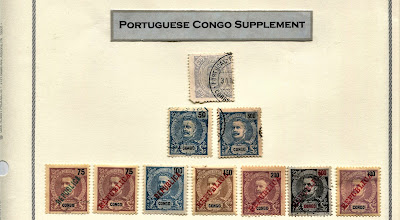This entry will look at, in greater depth, some stamps/issues of British Honduras from 1891 to 1938. Previous relevant blog posts are.....
British Honduras Part B: A Closer Look
The British Honduras typographed De la Rue "Victoria" issue of 1891-98 is similar in appearance to other De la Rue colonial issues of the era (Example: Gambia 1898 Issue). Note the "Postage"..."Postage" inscribed tablets in either side of Victoria's visage.
CV ranges from <$1 (2c carmine rose) to $95 (25c red brown & green).
There was a need for the stamps to serve "revenue" as well as "postage" uses - because in 1899, four regular issue stamps were overprinted "revenue". Note the major number has the OP 12 mm long, but there also exists minor number OP 11 mm long. CV for the 10c stamp (shown) is $19.
Between 1899-1901, De la Rue also printed a five stamp "Victoria" issue with "Postage"..."Revenue". The 10c stamp above has a CV of $11, but the $1, $2, & $5 denominations are CV $95-$325.
Here is a scan of all of the 1916-18 "War Tax" stamps. Note the 1916 Scott MR1 1c green "George V" with violet Moire overprint is shown enlarged by the "Out of the Blue" section below.
A semi-postal five stamp issue with overprinted surtax was produced in 1932 to aid those affected by the city of Belize hurricane of September, 1931. CV ranges from $3 to $10.
I featured some of the 1938 pictorials with previous British Honduras posts, but here are the higher denomination value stamps in the set. CV for the 50c is $13 unused.
The "chicle industry" for chewing gum was part of British Honduras's economy.
CV is $18 unused. These engraved bi-colors are some of the best of the colonial issues in my opinion.
CV is $20. What a gorgeous stamp!
The Mahogony trade was quite important in British Honduras, and later, Belize.
CV is $19. "Sub Umbra Floreo" (Latin) means "I flourish in the shade" - referring to both the ubiquitous British Honduras tree canopy - and - under the protection of the colony.
Out of the Blue
I hope you enjoyed looking at some more classical era stamps of British Honduras. I did!
Comments appreciated!




































